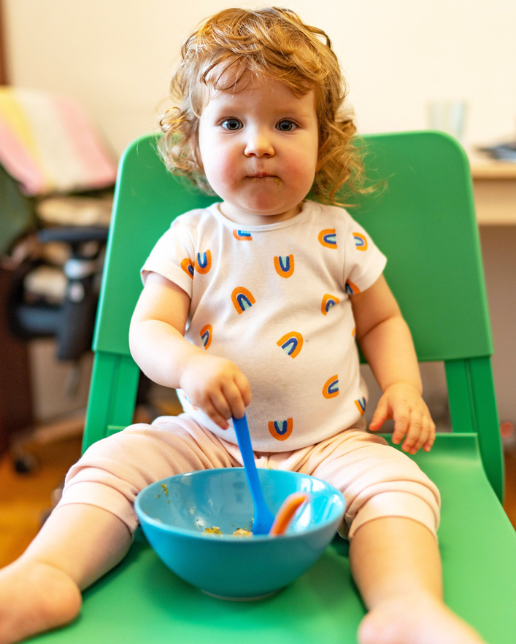 In the adoptive, foster, and kinship community, there’s often a wide range of what parents know about the child’s birth parents. Frequently, information about the birth mother’s prenatal care can be challenging to verify, especially in foster care adoptions. Your child may have come to you with a confirmed diagnosis of prenatal exposure to alcohol or drugs, but it’s more likely that they have not. The US government estimates that 10-11% of all children born in the US have prenatal exposure to alcohol or drugs, often both. The statistics among children in foster care are staggering, with some estimates as high as 80% of these kids affected by prenatal exposure. Chances are high that your adopted, foster, or kinship child exhibits some physical or behavioral symptoms of prenatal exposure.
In the adoptive, foster, and kinship community, there’s often a wide range of what parents know about the child’s birth parents. Frequently, information about the birth mother’s prenatal care can be challenging to verify, especially in foster care adoptions. Your child may have come to you with a confirmed diagnosis of prenatal exposure to alcohol or drugs, but it’s more likely that they have not. The US government estimates that 10-11% of all children born in the US have prenatal exposure to alcohol or drugs, often both. The statistics among children in foster care are staggering, with some estimates as high as 80% of these kids affected by prenatal exposure. Chances are high that your adopted, foster, or kinship child exhibits some physical or behavioral symptoms of prenatal exposure.
What is Prenatal Exposure?
During pregnancy, if a mother drinks alcohol or uses drugs, it exposes and can affect an embryo. Depending on the dose, timing, and conditions of this exposure, prenatal exposure can cause various disabling conditions. The mother’s unique history, individual characteristics, and the developing fetus’s traits, also affect the range of impacts.
 How is Prenatal Exposure Diagnosed?
How is Prenatal Exposure Diagnosed?
Prenatal alcohol exposure is widely undiagnosed or misdiagnosed. Some parents choose not to seek a diagnosis, fearing it will stigmatize their child. CreatingaFamily.org desires to push back on that gently – we believe that knowledge about our children’s challenges can empower us to pursue the best resources and interventions to set them up for success.
Diane Malbin, expert and mother of a child with Fetal Alcohol Spectrum Disorder (FASD), says it well in Fantastic Antone Succeeds*:
“Without identification or diagnosis, parenting a child with Fetal Alcohol Syndrome (FAS) or fetal alcohol effects (FAE) is like trying to find your way around Denver with a road map of Cincinnati.”
Understanding the Diagnoses
In 2020, the CDC reported that “the use of other substances was common among pregnant women who reported alcohol use.” It’s difficult to separate the effects of prenatal drug use from prenatal alcohol use. Consult with your pediatrician for the advice and experience they can offer. The following are considerations for parents seeking a diagnosis for what you suspect is prenatal exposure.
Diagnosing Prenatal Alcohol Exposure
When a child has been exposed to alcohol prenatally, physical abnormalities can be seen quite early in their development. These include a thin upper lip, lack of a groove between the nose and the mouth (the philtrum), small head circumference, and small eyes. However, it’s critical to note that these physical traits are only present in 10-15% of children with prenatal alcohol exposure and only if the mother drank heavily during the first trimester when the baby’s facial features are forming. These features become less pronounced with age.
Specialists also diagnose prenatal exposure based on a cluster of behavioral and learning symptoms that the child exhibits or the parents report.
 Diagnosing Prenatal Exposure to Drugs
Diagnosing Prenatal Exposure to Drugs
Neonatal Abstinence Syndrome (NAS) can occur when drug exposure occurs in the womb. The term often applies to opioid medicines like heroin, codeine, and oxycodone. Symptoms may start anytime between 1 and 7 days after birth.
The symptoms of (NAS) may differ slightly for each baby, including
- Trembling (as if shivering violently)
- Excessive or high-pitched crying
- Sleeping problems
- Tight muscle tone
- Overactive refluxes (easily or excessively startled, etc.)
- Seizures
- Excessive yawning
- Congested nose & sneezing
- Poor feedings & sucking struggles
- Vomiting or diarrhea
- Skin irritations (dryness, itchiness)
- Sweating, fevers, or unstable body temperature
Prenatally exposed infants are also at a higher risk for Sudden Infant Death Syndrome. The list is overwhelming, and the symptoms are challenging, but they usually disappear by about six months old. If these symptoms persist beyond that age, you should consult your pediatrician.
What are the Impacts of Prenatal Alcohol and Drug Exposure?
The primary physical symptoms mentioned above may lessen over time. Other primary behavioral symptoms will last throughout the child’s life.
 Primary Symptoms and Impacts by Age and Stage
Primary Symptoms and Impacts by Age and Stage
- Prenatal Exposure in Babies and Toddlers
Babies and toddlers who were prenatally exposed may have the following impacts, lasting after the 6-month mark:
- Small stature (height, weight, head circumference)
- Low (also called floppy) muscle tone
- Difficulty with soothing
- Sleep issues
- Feeding issues – suck, swallow, reflux
- Sensory issues – over-stimulated or under-responsive to stimuli
- Difficulty with change, transition, or new experiences
- Insecure, anxious attachment
- Gross & fine motor delays
- Speech/language & cognitive delays
- Balance & coordination challenges (as toddlers)
2. Prenatal Exposure in School-Age Children
During the elementary years, prenatally exposed children often show developmental disparities and challenges in these areas:
- On target for some developmental milestones but well below for others
- Extremes in “on” days and “off” days
- Memory retention challenges
- Difficulty retaining skills already mastered
- Struggles to learn from their mistakes
- Attention differences, hyperactive, impulsive
- Poor social skills, difficulty making & keeping friends
- Executive function delays (organizing, planning, understanding abstract concepts, completing tasks)
- Lying, stealing, inappropriate sexual behavior
A child with prenatal exposure doesn’t just have an occasional bad day. They display a cluster of signs, and their challenging behaviors occur in frequency, intensity, and duration. They don’t exhibit these symptoms only once in a while.
 Parenting Strategies for Early Childhood through Elementary School
Parenting Strategies for Early Childhood through Elementary School
Parenting a child with prenatal exposure is difficult, but having a plan can make all the difference. Underscore everything you do for your child by acknowledging that they are not intentionally misbehaving, “being bad,” or won’t do what you ask due to stubbornness or defiance. Instead, accept that your child can’t do what you are asking or expecting of them due to missing skills caused by brain damage from prenatal exposure. Trying Differently Rather Than Harder* by Diane Malbin is an excellent source for more information. Regardless of whether your child has a confirmed diagnosis, the following strategies can help.
2 Key Parenting Strategies for Babies and Toddlers
1. Schedules and structure are key.
Establish consistent naptime and bedtime routines. Routine is vital for our littlest ones who have had prenatal exposure. Don’t let your baby get over-upset and frantic – instead, comfort them with cuddling, swaddling, rocking, or massaging. Try a calming scent, such as lavender or vanilla. Use soft white noise, such as a fan, or gentle, calming music.
Babies need stimulation, such as being spoken to, played with, sung to, and rocked. However, if your baby was prenatally exposed, proceed with those stimulating activities in slow, measured doses to avoid overloading their senses. Encourage self-soothing behaviors, such as sucking on a fist or a pacifier. Use warm diaper wipes. For toddlers, also implement a screen curfew within one hour of sleep.
2. Exercise patience with feeding issues.
Feed at the first signs of hunger. Give smaller quantities more frequently, feed slowly, and burp often. Try differently shaped or size bottle nipples — experiment with changing the texture of the bottle nipple, or spoon. Stroke the baby’s lips and gums gently before giving a bottle. Try massaging the baby’s cheeks before feeding, and keep the baby’s chin tucked in. Reduce outside stimulation during bottle time, including eye contact. Keep the baby elevated for 30 minutes after feeding.
Picky eating can be a problem for toddlers with prenatal exposure, so gradually introduce new foods, one change at a time. Prepare and offer foods with neutral flavors, heat, and texture until they tolerate the changes.
8 Parenting Strategies for Pre-School and Elementary Kids
 1. Again, routines are key.
1. Again, routines are key.
Routines and repetition are your friends! Set up predictable routines to minimize the demands on your child’s memory. Use a picture schedule of daily activities, even if they know how to read. Chunk the day’s routine and the information your child needs to access.
2. Build skills with a variety of tools.
Use visual cues (picture schedules, flashcards, etc.) to pair with your words and directions. Begin conversations with your child’s name and make eye contact. Use the echo system to strengthen listening and comprehension skills: say what the child needs to hear and ask the child to repeat what you say. It will help to point to the pictures while you speak.
If your child uses 3-word phrases, you can reply with 4-5 word phrases to build their verbal skills. Read aloud to your child daily and as they develop their reading skills, let them read to you. The Way I Am is Different* by Helen Simpson, is a children’s book about a third-grade boy with prenatal exposure. Praise any accomplishments rather than focusing on mistakes.
3. Give plenty of time and space to process.
Often, kids who had prenatal exposure to drugs or alcohol need more time to think about what we are asking them to do. Allow more time for everything, from brushing their teeth to doing homework. Speak slowly and pause in between sentences.
4. Make the expectations clear and consistent.
Establish a short list of house rules and enforce them quickly and consistently. Label or color code objects and belongings to help teach them ownership and stay organized. Break down routines into chunks — plan for transitions by setting a timer and giving cues that change is coming. Play board games and card games, and do jigsaw puzzles to build executive functioning skills (and bond as a family).
5. Offer plenty of physical activity.
Give your child numerous daily physical breaks. Focus on one thing at a time and limit choices. They must practice how to concentrate, like during homework. But be sure they get time to move their bodies and to learn other ways to regulate their impulses (deep breathing, counting to 10), so they can focus.
6. Help them learn how to be a friend.
Your child may act at their developmental age rather than their chronological age. It’s okay if your nine-year-old enjoys playing with a four-year-old! Make sure you know your child’s friends. Try to be present to supervise play times and to teach sharing and taking turns. Model and offer do-overs to practice correct responses and actions.
 7. Simplify their environment.
7. Simplify their environment.
Streamline your home’s living spaces with an eye toward the use of light, colors, sounds, smells, textures, and even your decor. Try to create a calm space where your child can retreat when overwhelmed. Give them a voice in making the area and work on using it when they are relaxed, so they don’t see it as a space for punishment or banishment. Remember that “less is more” for a brain impacted by prenatal exposures.
Try to intervene at the earliest signs of escalation. Try having your child move like an animal to get their body to release the tension, or show them how to tense, then release muscle groups one at a time to reduce the physical sensation of dysregulation. You can cool things down by offering a cold glass of water, a popsicle, or running their wrists under cold water.
8. Look for brain-based reasons.
Our kids with prenatal exposure often lie or steal because they don’t yet have the skills to understand cause and effect. So try not to see it as a moral failure – instead, look for a brain-based reason for the behavior. Does this child have missing skills you can work on or an unmet need? Increase your supervision, especially in tempting situations, to protect them from feeling like they “have” to lie or steal to meet their needs. Teach your child the difference between reality and fantasy.
 Begin and End with Nurture and Connection!
Begin and End with Nurture and Connection!
Experts have determined that several protective factors can lessen the effects of prenatal exposure. They include early diagnosis, access to social and educational services, the absence of violence in the home and the community, and the child’s resilience. Finally, the most potent protective factor is time spent in a stable, nurturing, and stimulating home environment. By continuing to educate yourself about prenatal exposure, you can gain the knowledge needed to better parent and support your child. You are cultivating hope for your child’s future by providing a safe, loving home environment. You may want to visit FASDUnited.org for more resources, a service directory, and advocacy opportunities.
Parenting is hard. Parenting a child with prenatal exposure to alcohol or drugs is harder. But their history of prenatal exposure doesn’t have to damage their self-esteem or your relationship with them as they grow. Find and nurture your child’s strengths so that they know they are more than their disability. A Walk in the Rain With a Brain* by Dr. Edward Hallowell is a children’s book celebrating the uniqueness of every person. Prenatally exposed kids are often affectionate, funny, and look at life differently. They can add a beautiful layer to your family. Your child will blossom when you adjust your expectations from “won’t” to “can’t,” and you can focus on praising the progress and positive traits you see in your child, no matter how small. Your affirmations will go a long way toward improving their behaviors, and the two of you will be free to enjoy each other.
This post was originally published by Creating A Family on January 5, 2023, through the generous support of Jockey Being Family Foundation. View the original post here.
Subscribe to Creating a Family’s newsletter & receive a free guide to Strengthening & Supporting Your Transracial Adoptee
Subscribe to CH/LSS newsletter
View CH/LSS Post Adoption Resources


